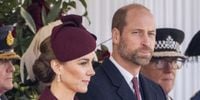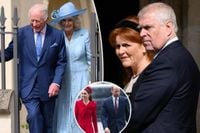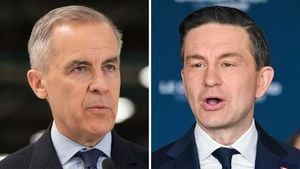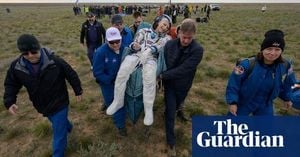On Sunday, April 20, 2025, the Easter Mattins service at St. George’s Chapel in Windsor Castle saw a notable absence: Prince William, Kate Middleton, and their three children. This marked the second consecutive year that the Prince and Princess of Wales skipped the traditional royal gathering, leaving many to wonder about the reasons behind their absence.
King Charles III and Queen Camilla were in attendance, dressed in their Easter best, with Charles sporting a dark-blue suit complemented by a light-blue tie and matching handkerchief. Queen Camilla, on the other hand, donned a baby-blue coat dress and matching hat. Other royal family members present included Prince Edward, Duke of Edinburgh, his wife Sophie, Duchess of Edinburgh, Princess Beatrice, her husband Edoardo Mapelli Mozzi, Princess Eugenie, and Jack Brooksbank, along with Sir Timothy Laurence and Sarah Ferguson, Duchess of York. Prince Andrew also attended, despite having lost his military titles and royal patronages in 2022 due to his controversial past.
Last year, the absence of William and Kate from the Easter service coincided with a challenging time for Kate, who had just announced her cancer diagnosis and was undergoing preventative chemotherapy. In September 2024, she shared that she had completed her treatment and was focusing on staying "cancer free" and returning to work. By January 2025, Kate announced that she was in remission, expressing relief and gratitude for the support she received during her health battle.
In an emotional statement shared on social media, Kate reflected on her journey, stating, "It is a relief to now be in remission and I remain focused on recovery. As anyone who has experienced a cancer diagnosis will know, it takes time to adjust to a new normal. I am however looking forward to a fulfilling year ahead." Her candidness about her health has resonated with many, highlighting the importance of support during difficult times.
This year, the Prince and Princess of Wales opted to spend Easter at their country home, Anmer Hall in Norfolk, with their children—Prince George, Princess Charlotte, and Prince Louis. This choice reflects their desire for privacy and family time, especially as Kate continues to focus on her recovery. Royal observers note that William's low profile and the family's preference for quiet celebrations could signal a shift in how they engage with royal duties.
Meanwhile, King Charles and Queen Camilla led the Easter service, engaging with guests outside the chapel. The atmosphere was one of unity among the remaining royal family members, despite the ongoing scrutiny surrounding Prince Andrew. His attendance at the service comes on the heels of a report revealing that he had been in contact with an alleged Chinese spy, which has raised further concerns about his past associations.
During the Easter service, the Archbishop of York delivered the sermon, addressing themes of peace and reconciliation in a world fraught with conflict. He highlighted issues in regions such as Israel, Gaza, Ukraine, Myanmar, Sudan, and the Democratic Republic of Congo, calling for unity and understanding among communities. The message resonated deeply, especially in light of recent global events.
As the royal family continues to navigate its public image amid various challenges, the absence of Prince William and Kate Middleton from the Easter service serves as a reminder of the personal struggles that can exist behind the façade of royal life. Their decision to prioritize family time and health over public appearances is a choice that many can empathize with.
In the context of the royal family's evolving narrative, experts suggest that William and Kate's choices may reflect a broader strategy for the future of the monarchy. Royal author Tom Quinn noted that succession planning has been a topic of discussion for some time, particularly as Charles, now the oldest Prince of Wales to ascend the throne, may not reign for long due to his age. This speculation raises questions about how the younger generation will shape the monarchy moving forward.
As the royal family adapts to changing societal expectations and personal challenges, the absence of William and Kate from such significant events may become more common. Their focus on family and health, particularly in light of Kate's recent health journey, underscores a shift towards a more modern approach to royal duties.
The Easter celebrations this year, while traditional in many respects, were marked by these significant absences and the ongoing evolution of the royal family's public persona. As the world watches, the future of the monarchy seems poised for change, driven by the priorities of its younger members.







